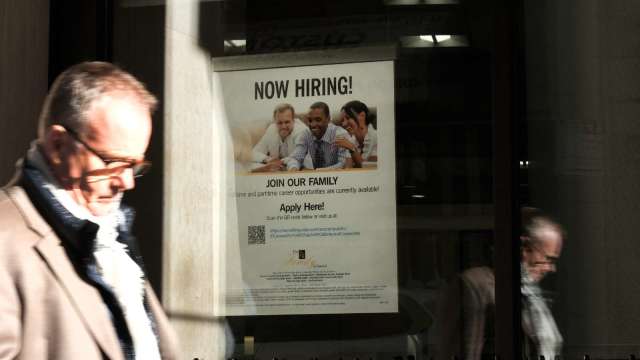The U.S. Department of Labor released its latest jobless claims data on Thursday. The adjusted number of initial jobless claims last week was 230,000, an increase of 4,000 from the earlier revised figure of 226,000, which was in line with market expectations. it far exceeded expectations and hit a new high since early February this year, indicating that with the first signs of a cooling in the labor market, it’s harder for unemployed Americans to find new jobs.
As of the week of December 3, the adjusted number of initial jobless claims in the United States reported 230,000, in line with market expectations. The previous revised number was 226,000 and the 4-week moving average was 230,000.
For the week ending Nov. 26, the adjusted number of Americans continuing to receive unemployment benefits was 1.671 million, an increase of 62,000 from last week’s unrevised 1.609 million and above market expectations by 1 .6 million, the 4-week moving average The reported value was 1.5822 million people.
While the US labor market has shown early signs of cooling, it is still resilient overall, allowing the Federal Reserve (Fed) to continue raising interest rates to fight inflation, although subsequent tightening measures have increased the risk of a recession in the United States.
Rubeela Farooqi, chief US analyst at High Frequency Economics (High Frequency Economics), said overall the US job market remains tight and labor demand is strong, but data shows that the number of unemployed is gradually increasing.
Foreign media reports pointed out that the number of initial jobless claims tends to fluctuate greatly at the beginning of the holiday season, because companies will temporarily close or slow down the pace of hiring, which may make it difficult for the outside world to understand the true state of the labor market through data.
Conrad DeQuadros, senior economic adviser at Brean Capital, said judging by the number of people still receiving unemployment benefits and the rising unemployment rate, this is a sign of a slight easing of tension in the labor market .If this situation persists, the economic outlook is worrying.
DeQuadros also noted that the number of jobless claims is difficult to seasonally adjust around Thanksgiving, so you need to look at whether later data shows an upward trend to judge the job market cooling.
Rugged economist Eliza Winger said last week’s jobless claims report combined with the earlier November nonfarm payrolls report further demonstrated that returning the labor market to balance between supply and demand is a slow process.


